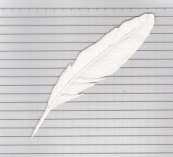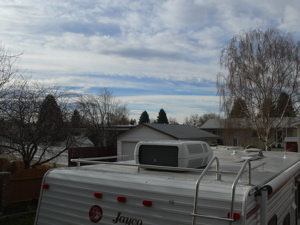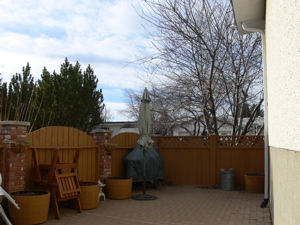2:20 PM This has been an interesting morning. I finished putting together the remaining two 100 ton quad hopper cars before noon. There is a strong sense of satisfaction when a project is completed. I bought the kit of 6 cars in October of 1993 and finally finished assembling them in November of 2006. At this rate I had better live for a few hundred years if I hope to get everything done that I want to do.
Now for the interesting part, Part I: I began reading "One Man's Wilderness" yesterday evening. This is a reworking of the journals and photos of Richard Proenneke by a man called Sam Keith. The book was originally published in 1973 and my book is the updated 26th edition. The book describes Dick's efforts at building a cabin in the Alaskan wilderness in 1968. It is a beautiful book and a beautiful story. I was particularly struck by his inventiveness at fashioning some wooden hinges for the door to his cabin. Fortunately there is a superb photo of the door, which even withstood the weight of a grizzly bear trying to barge its way in. I have been to the Yukon and the North West Territories and have a strong hankering to return for another visit. But I do not (yet) have a desire to build a cabin from scratch.
Part II: After completing the hopper cars, I had a short review of my diesel locomotives. I have tentatively culled about 6 of them as not having the detail or operating characteristics that I now want. I then took the shell off one of the remaining ones in an attempt to lubricate it. Once I had it apart, I realized that I really didn't know what I was doing. I then went through my magazines and located two that gave details on what was involved. What was most obvious was how dated the material was. The issue was from 1989 and referred to many locomotives that were build in the early 1980's. Clearly a lot has changed since the book was published. I now realize that I had better have another look at the publications when I am in Calgary again.
Part III: I then decided to see what I could find on the Web and on the NMRA (National Model Railroad Association) site. It was nt long before I discovered the Achievement Program: "Briefly, the AP is a system of requirements for demonstrating a superior level of skill in various aspects of our hobby." This is a very carefully laid out set of criteria for demonstrating competence in a variety of areas. One must meet the criteria in 7 out of 11 categories:
- Motive Power
- Cars
- Structures
- Scenery
- Prototype Models
- Engineer - Civil
- Engineer - Electrical
- Chief Dispatcher
- Association Official
- Association Volunteer
- Author.
I am not one to normally join organizations, nor am I one to collect certificates or merit badges. But the checklists and criteria do provide a form of guide to indicate how much I understand about the hobby (i.e. at the moment not very much).
Part IV: I am also trying to improve my understanding of the strategy game of GO, by following a set of suggestions from a web site on Learning GO for Beginners.
Part V: I am going to stay with this NMRA site for a bit and see how it goes. I do not yet belong to the NMRA and there does not appear to be a branch in Lethbridge. Looking at the web site, the Southern Alberta Model Railroad Club is not listed as one of the local NMRA branches. I also noted that Alberta is in the Pacific Northwest Division. ( http://pnr.nmra.org/6div/ ) and that the 2008 Meet is in Lethbridge ( http://pnr.nmra.org/6div/history.html ). Trying to become a Master Model Railroader may not be quite the same as building a cabin in Alaska, but they are both individual challenges. And with the modeling I am not likely to get frostbite.
I have just sent an email to see if I can get more information on joining the NMRA.
|





